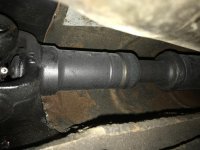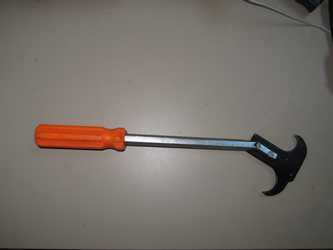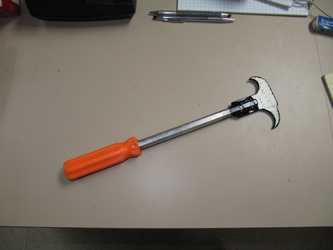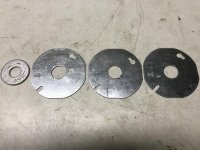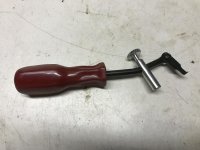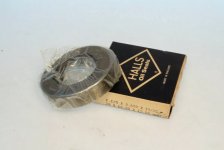Folks, I need to replace the rear pinion seal on my 1965 Tr4a (solid axle). I crawled under the car to check out the work involved, and it sure looks like it may be a bigger job than I expected.
Due to the way the Tr4a frame angles toward the center of the car, the driveshaft and exhaust pipes both occupy a pretty tight space. There’s also the plate connecting the frame rails at the narrowest point, that precludes dropping the driveshaft straight down.
If I disconnect both ends of the driveshaft, would there be enough room to maneuver the shaft out of the way enough to get the drive flange nut off and remove the flange?
The other thought I had was loosening the differential and rotating it down until the drive flange cleared the driveshaft. Does that sound doable?
I’m hoping I don’t have to completely remove the differential just to replace the pinion seal.
Anyone been down this road before?
thanks
Jim
Due to the way the Tr4a frame angles toward the center of the car, the driveshaft and exhaust pipes both occupy a pretty tight space. There’s also the plate connecting the frame rails at the narrowest point, that precludes dropping the driveshaft straight down.
If I disconnect both ends of the driveshaft, would there be enough room to maneuver the shaft out of the way enough to get the drive flange nut off and remove the flange?
The other thought I had was loosening the differential and rotating it down until the drive flange cleared the driveshaft. Does that sound doable?
I’m hoping I don’t have to completely remove the differential just to replace the pinion seal.
Anyone been down this road before?
thanks
Jim

 Hi Guest!
Hi Guest!

 smilie in place of the real @
smilie in place of the real @
 Pretty Please - add it to our Events forum(s) and add to the calendar! >>
Pretty Please - add it to our Events forum(s) and add to the calendar! >> 


